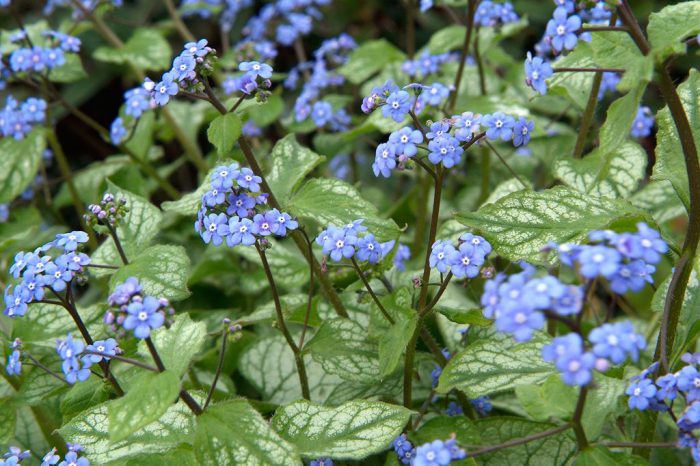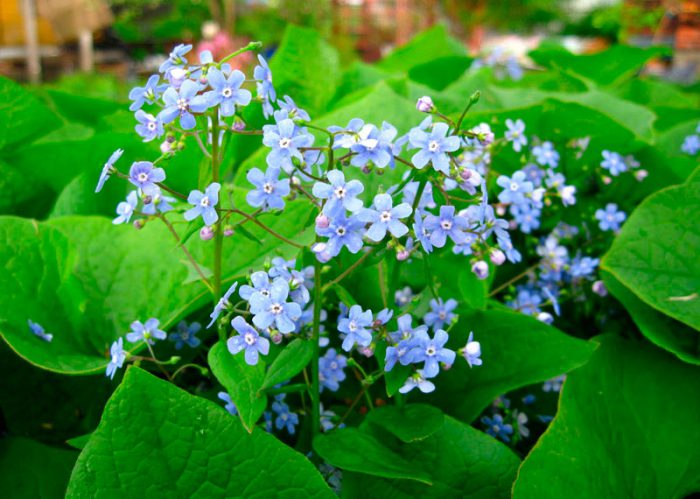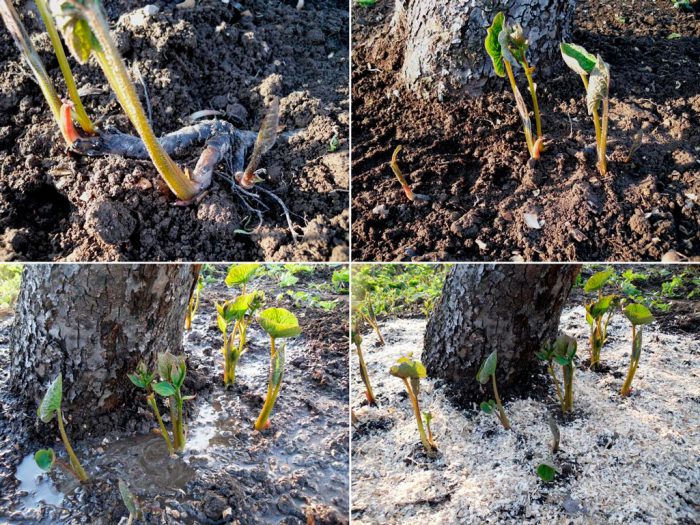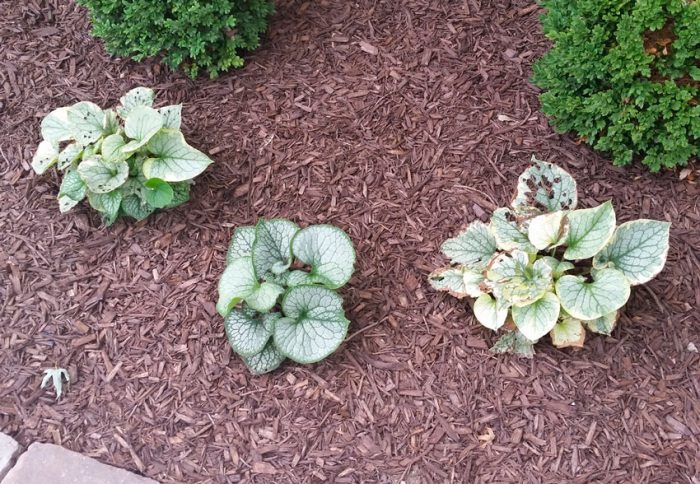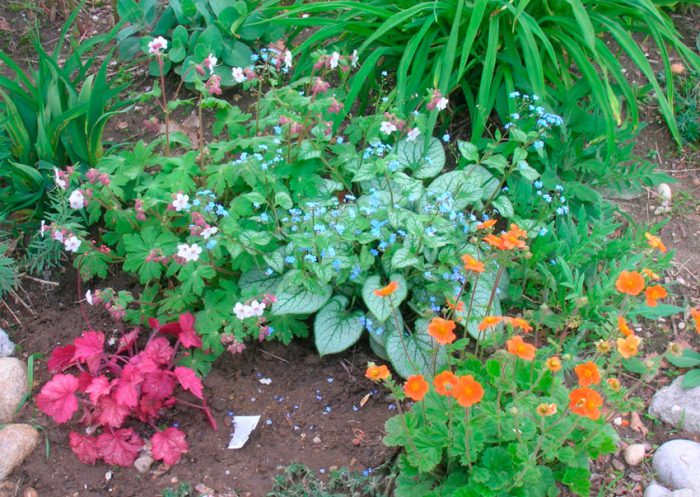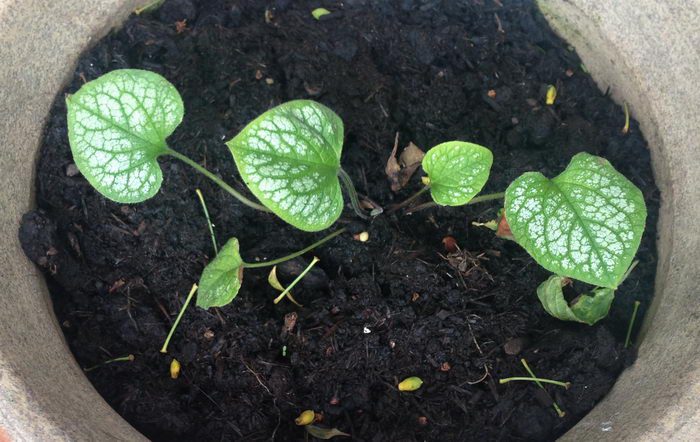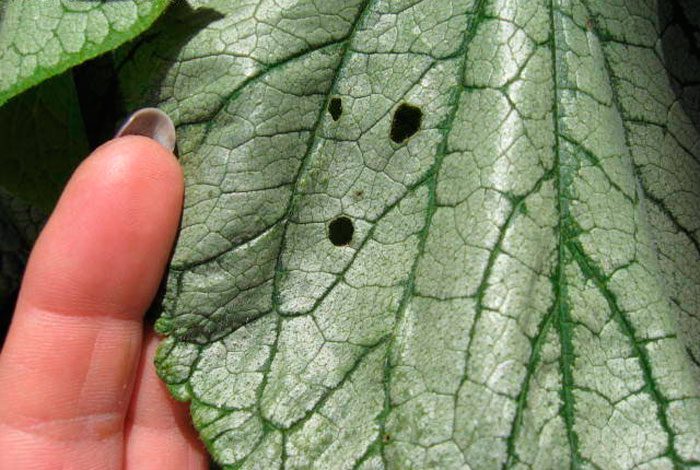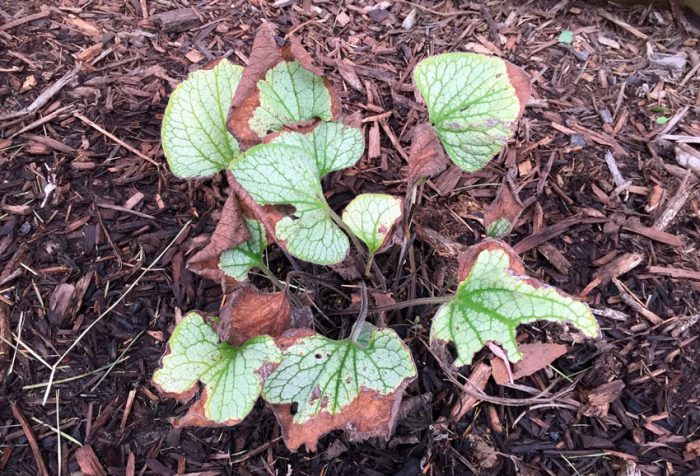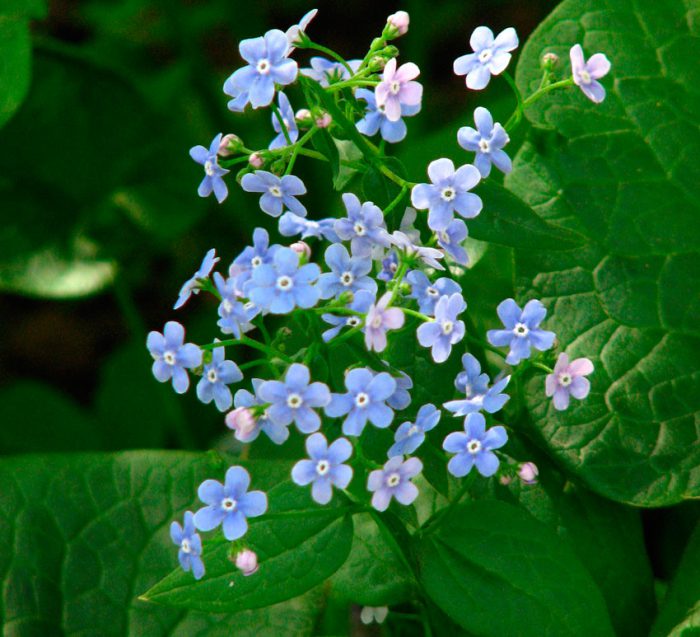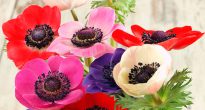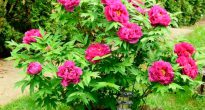A plant such as brunner or brunner (Brunnera) is directly related to the genus of herbaceous perennial plants of the borage family. This genus unites 3 species. These plants are found in natural conditions in Western and Eastern Siberia, the Caucasus and Asia Minor. This flower was named after the Swiss S. Brunner, who is known as a traveler and botanist. Only 2 species of brunner are cultivated, namely: Siberian and large-leaved. These plants are most often used to create borders and for stable decorative groups in mixborders.
Content
Brunner's features
Brunera is a herbaceous plant that is a perennial, a bush in height can reach 45-50 centimeters. There is pubescence on the surface of branchy shoots. Large one-piece long-petiolate leaf plates have a wide-heart shape. Small blue flowers (diameter 0.5–1 centimeter) are outwardly similar to forget-me-nots, therefore such a plant is popularly called a forget-me-not. Such flowers are part of paniculate or corymbose inflorescences. Flowering begins in April and lasts 4 weeks, possibly re-flowering in autumn. The flower of this plant differs from forget-me-not in that the spot inside it is painted not yellow, but white. The fruit is a nut. Such an undemanding plant in care, growing, forms spectacular thickets. It is winter-hardy, but does not feel well during the dry hot period. Without a transplant, a Bruner can be grown in the same place for about 15 years.
Brunner's landing
Such a plant in natural conditions prefers to grow in the forest, in this regard, it is shade and moisture-loving. When choosing a site for planting, be sure to take this into account. In hot areas, it is necessary to choose a shaded area for planting a bruner, since the scorching sun rays can destroy it. In areas with a less hot climate, planting this flower should be done in a slightly shaded place, or you need to choose an area that will be in the shade after lunch. If you plant it next to a pond, then such a plant is able to withstand the direct rays of the sun. Clayy wet soil is suitable for planting, while the Siberian brunner is more demanding on the composition of the soil than the large-leaved one.The disembarkation, as well as the transplant, are carried out in the last days of July or in the first days of August. Bruner's spring transplant is very bad. At this time, only large-leaved bruners can be transplanted, while it is necessary to take an earthen lump of a relatively large size. Disembarkation should be made in the evening or on a cloudy day.
How to plant correctly
Most often, the planting of the large-leaved brunner is combined with the division of the flower. After the bush has faded, it must be dug out. Then the root system must be freed from the soil, while immersing it in a container of water. After that, the bush is divided into parts, while adhering to the natural collapse of the rhizome. If necessary, a very sharp, pre-sterilized knife should be used to cut the rhizome. When dividing, it should be borne in mind that roots should be present on each division, as well as a recovery bud of the next year. Plant the cuttings in the holes, and then water them well.
You can propagate the Siberian Brunner by segments of rhizomes. It is located very close to the ground surface. From the excavated rhizome, it is necessary to cut out old areas, as well as those on which there is rot. Then it is divided by breaking in such a way that there is a living bud of renewal on each resulting cut. The length of the cut can vary from 4 to 6 centimeters. Each piece is planted separately, buried in the soil by 2-3 centimeters, then it is watered very well.
When the plants are planted, the surface of the soil is sprinkled with a layer of mulch (limestone, sawdust, tree bark, wood ash or coffee grounds).
Brunner's garden care
The rules for caring for the Siberian Brunner and the Large-leaved Brunner are different. The large-leaved brunner retains an attractive appearance throughout the growing season, and if you choose the right place for it (shaded with wet soil) when planting, then you can forget about leaving it until autumn time. All that this species will need is systematic weeding, which must be carried out without fail, but it should be borne in mind that it is impossible to loosen the soil, because the plant's root system is located very close to the soil surface.
After the Siberian brunner has faded, brownish specks will begin to form on its leaf plates. Then the leaves will begin to fade, and it is recommended to remove them in the middle of summer. In the second half of August, young leaves should grow in the Brunner, which can hold out until the first frost. This species is not afraid of weeds, it also does not need watering (there is enough natural precipitation) and loosening of the soil, because the root system is also located quite close to the soil surface. If the summer is very hot, then the Brunners, regardless of the type, will need to be watered periodically, immediately after the leaves begin to droop.
Breeding brunner
The above describes in detail how to propagate brunner by dividing the rhizome. It should be borne in mind that variegated forms can only be propagated in this way. It is quite possible to grow a species brunner from seeds, however, due to early frosts, it rarely has time to set seeds. But you can always get the seeds of such a plant in a specialty store. The seeds of this flower are very small. It is recommended to sow them in open ground before winter (in autumn). For spring sowing, the seeds must be prepared, for this they should be subjected to stratification, which lasts 3 or 4 months. To do this, you can sow them in a box and then bury it in the snow outside, but the easiest way is to put them on a refrigerator shelf. It should be borne in mind that it is much easier to propagate a Brunner by division than by seeds, and it often reproduces itself by self-seeding.
Pests and diseases
If there is a lot of rain in the summer, then such a plant may develop brown spot, the spots that have appeared on the leaf plates will indicate infection. Brunera can also become infected with powdery mildew. In a diseased specimen, all infected parts must be removed, and then it must be treated with any fungicidal agent (for example, Bordeaux mixture).
Whiteflies and aphids can also settle on this flower. To destroy them, it is recommended to process the bush with Karbofos or Aktellik.
Wintering
It is very easy to prepare Brunner for the coming winter. Leaf plates in the fall need to be cut off, since they themselves do not die off. It is not necessary to cover these flowers, because they are quite winter-hardy, however, experienced gardeners recommend covering the area with a layer of mulch (peat, compost or humus).
The main types and varieties with photos and names
Brunner large-leaved (Brunnera macrophylla)
In natural conditions, it can be found in the Caucasus Mountains, in this regard, the Germans also call this plant "Caucasian forget-me-not." It looks like a bush. Branched leafy shoots extend from the rhizome, their surface is rough and pubescent. The bush reaches a height of 30 to 40 centimeters. Basal long-petiolate leaf plates have an oblong-heart-shaped shape with a pointed upper part. Their front side is colored dark green, and the back side is grayish, because it is rough and has pubescence. Small (about 0.7 cm in diameter) dark blue flowers have a white center. They are part of the apical inflorescences of the paniculate-corymbose shape. Flowering begins in the last days of April and lasts 4 weeks. If it is warm in the autumn, then re-flowering is quite possible. It has been cultivated since the 19th century.
Popular varieties:
- Millennium Zilber... There are large whitish-silvery spots on the leaf blades.
- Jack Frost... The leaf plates are silver colored, and green veins are clearly visible on their surface. There is a narrow edging of green color.
- Hudspan Cream... The length of the wide, heart-shaped leaf plates is about 15 centimeters. They have a narrow edging of a creamy white color.
- Langtries... There are small silvery dots along the periphery of the dark green leaf plate. The flowers are blue.
- Variegata... On the leaf plates there is a wide strip of creamy white color, which extends over the green part with deep tongues. The leaves growing in sunny places are almost white.
Brunner Siberian (Brunnera sibirica)
In natural conditions, it is found in the forests of Altai and Sayan. This species is much larger and more beautiful than the large-leaved brunner. The thickness of the long rhizome is about 10 millimeters. Glandular-pubescent shoots are solitary and can reach a height of 60 centimeters. This species forms thickets. Dense heart-shaped basal leaf plates have a long petiole and a wrinkled surface. Stem leaves are sessile, almost lanceolate. Small (0.5 centimeters in diameter) dark blue flowers have a white center. They are part of complex paniculate inflorescences. Flowering begins in May and lasts 20 days.
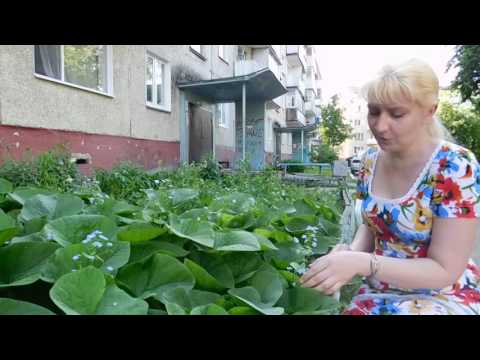

Watch this video on YouTube

